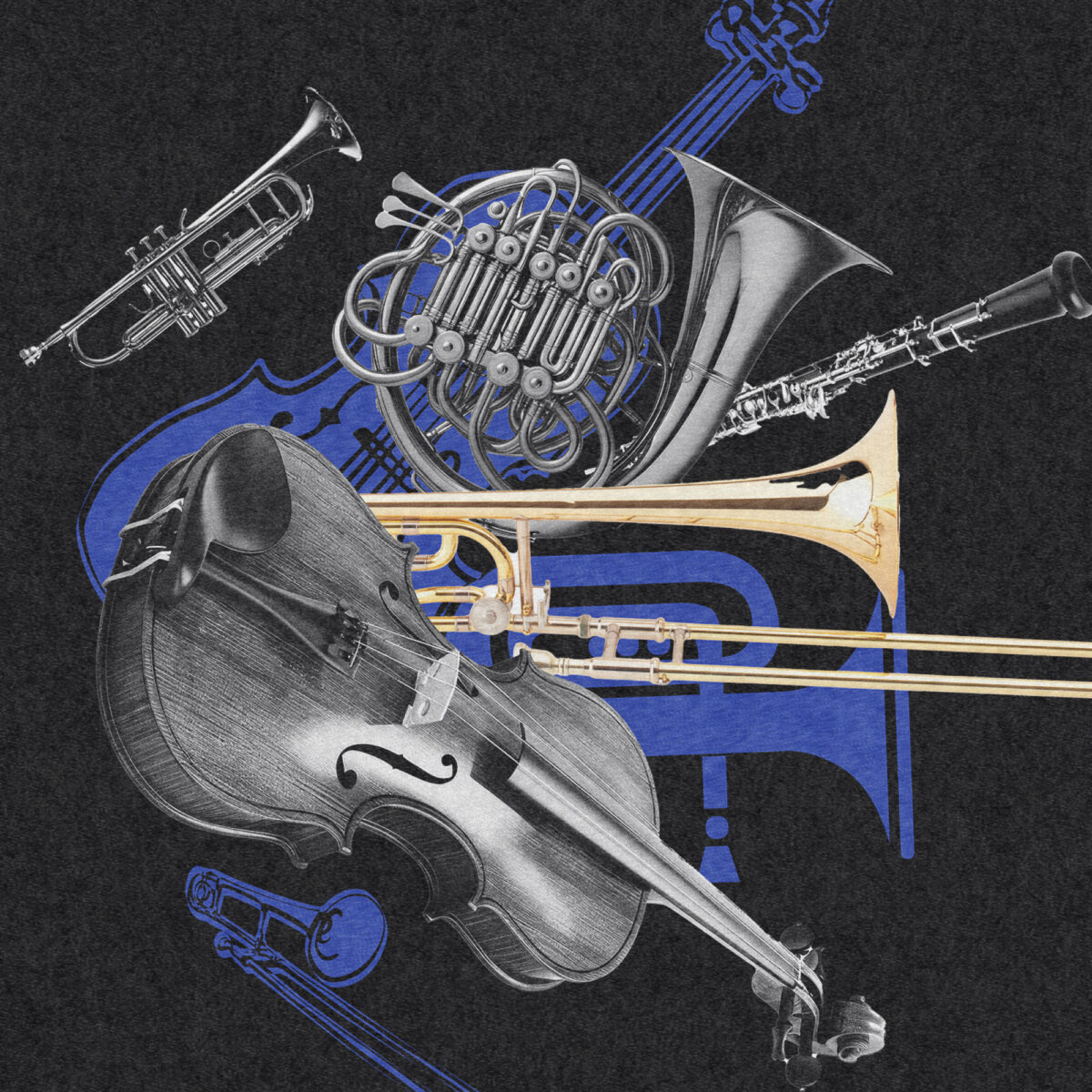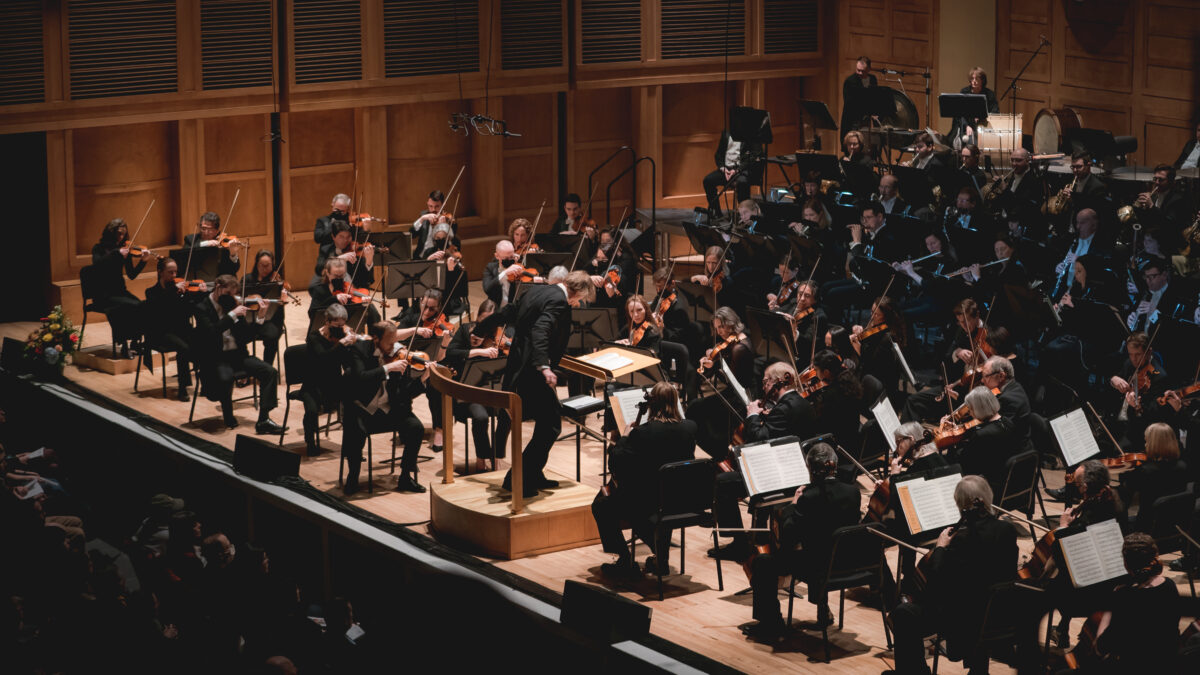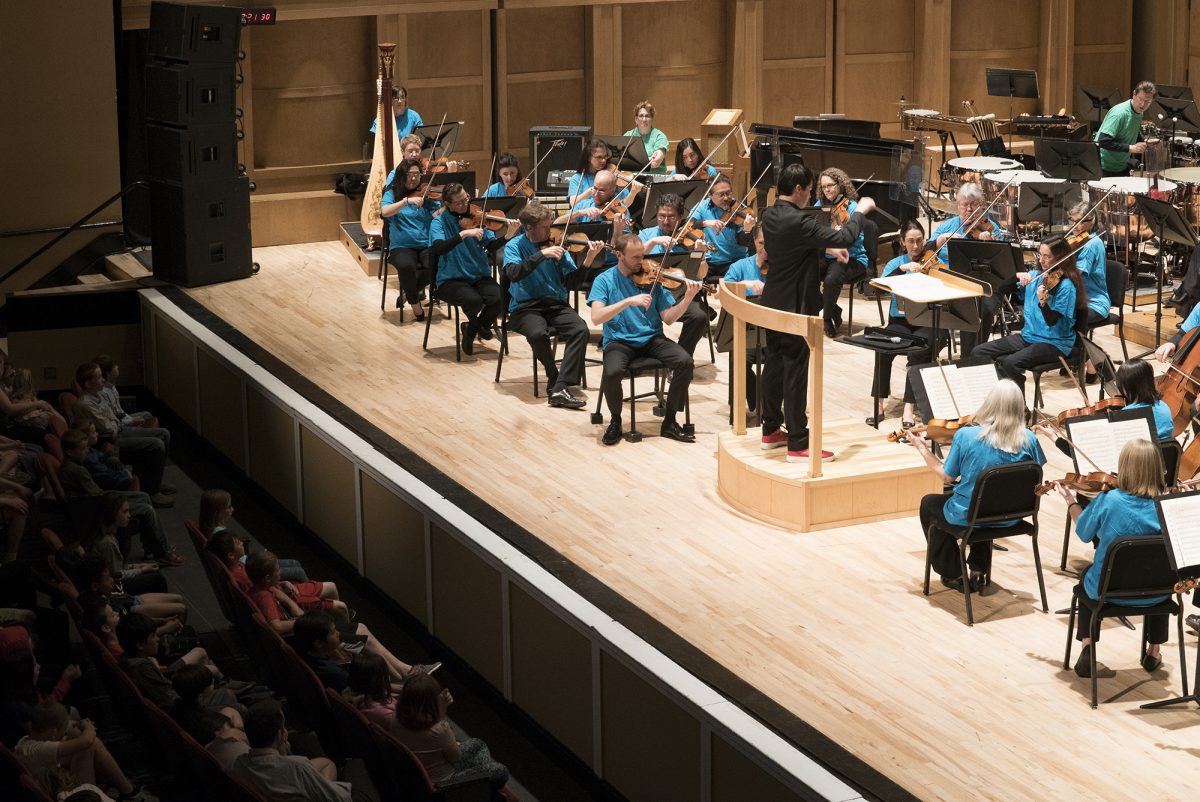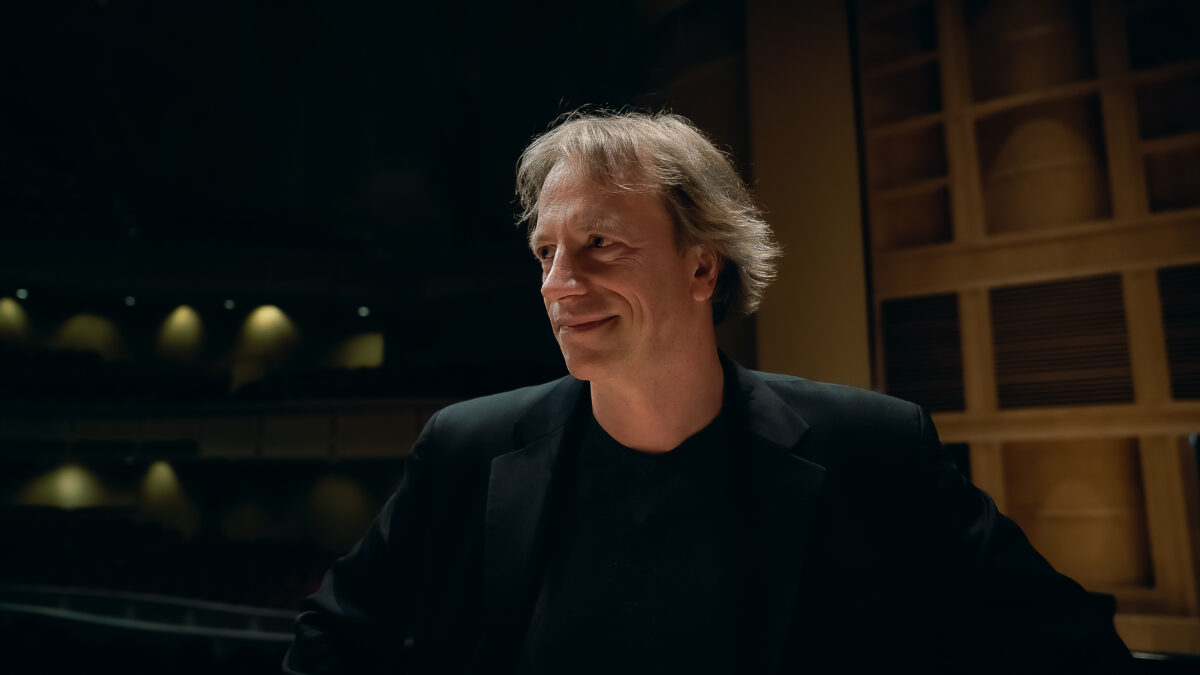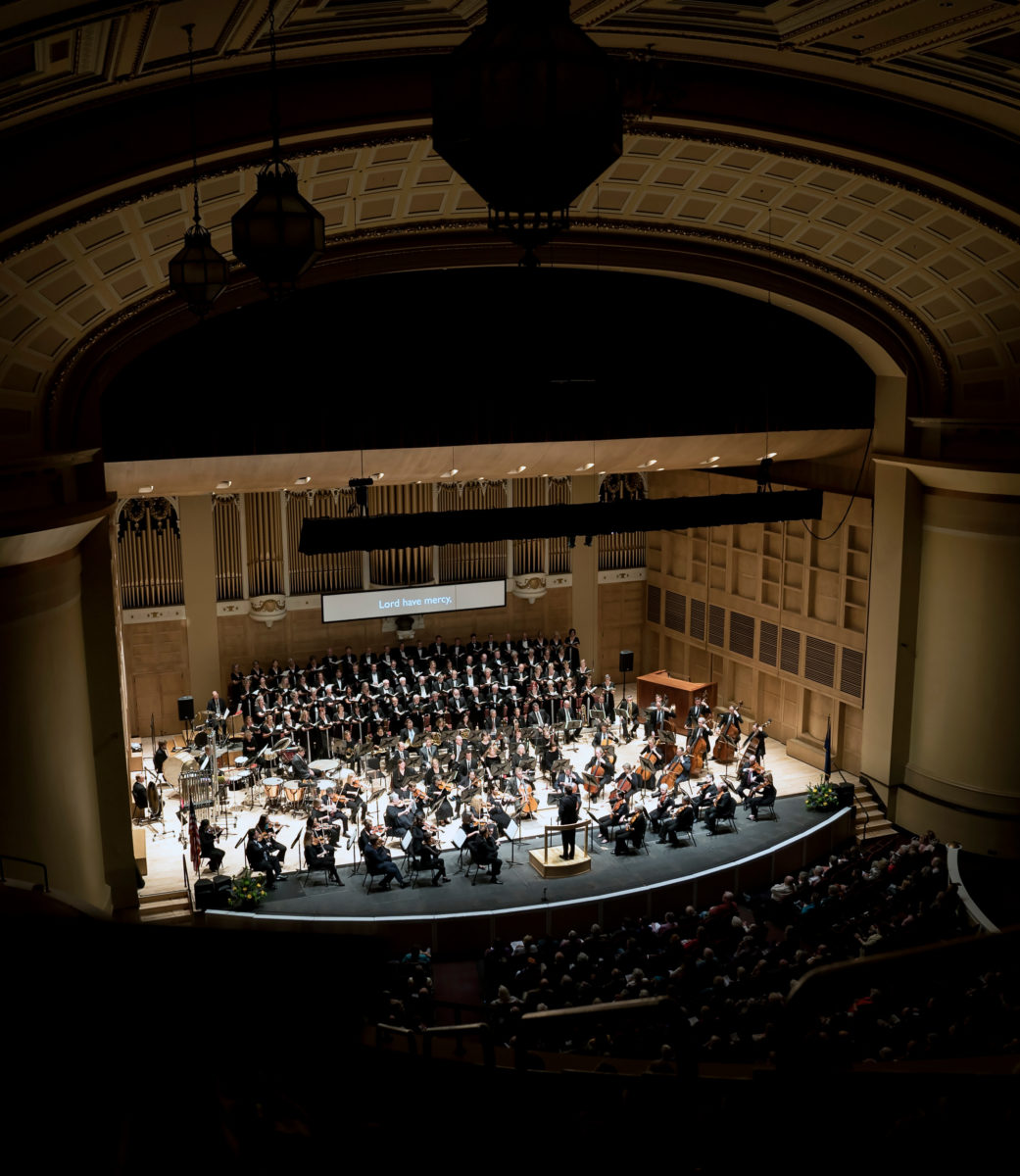Eckart’s Inaugural – Alpine Symphony Program Notes
Jean Sibelius
Finlandia, Op. 26
Jean Sibelius was born in Tavestehus, Finland in 1865 and died in Järvenpää in 1957. He composed Finlandia in 1899 and led the first performance at a benefit concert for the Press Pension Fund at the Swedish Theater in Helsinki the same year. Finlandia is scored for 2 flutes, 2 oboes, 2 clarinets, 2 bassoons, 4 horns, 3 trumpets, 3 trombones, tuba, timpani, percussion, and strings.
*****
Warhorse? Chestnut? Pot-boiler? Generations of critics and musical elites have developed a pejorative vocabulary to stand-in for their true thoughts, which run along the lines of “I’m really tired of this piece and I really don’t have the patience to hear it again.” For some works it is a simple case of over-exposure: though today it seems far-fetched, there actually was a time when you could browse in a bookstore without hearing Pachelbel’s Canon, for example. To this list we might add any work that shows up in late night television commercials for the “100 Greatest Melodies,” or ones that have suffered the ultimate indignity: being turned into a pop song.
There is another category: music that wears its heart on its sleeve, music that’s stirring, perhaps even patriotic—in short, music that just isn’t subtle enough. At the head of this list must be Finlandia.
Sibelius composed Finlandia during a time of political turmoil. Finland had been a Grand Duchy of the Russian Empire and had been, for the most part, left alone. But with the ascendancy of Tsar Nicholas II came pervasive oppression: the power of the Finnish legislature was abrogated, freedom of speech and other civil rights were curtailed, and newspapers in Finland were shut down. The Finnish people organized a series of protests—disguised as entertainments—with proceeds going to the Press Pension Fund. Sibelius had never been overtly political, but circumstances moved him to compose a multi-movement work called Music for the Press Celebration Days for performance at these events. The various movements of this piece (much of which was never published) depicted different aspects of Finnish history and mythology. Sibelius later re-worked the final movement, called Finland Awakes, into a stand-alone piece known by a new title: Finlandia.
But it was not known by that title immediately. The Finns who heard Finland Awakes could hear a country yearning for freedom in it, and had responded with enormous enthusiasm—so much so that the political masters in Russia allegedly banned performances of the work under its new title. Though it was heard in some places as Finlandia, in others it was called Impromptu. The national pride in the music of Finlandia continues today in the country that finally achieved its independence a few weeks after the Russian revolution: it is widely thought of as Finland’s second national anthem.
Finlandia begins with menacing growls and a stentorian chorale in the brasses. This is carried on by the winds and strings, over rumbling timpani, until the Allegro begins. At first this music takes up the opening growls, but this is only a feint: before long the mood turns from ominous to invigorating. Finally we realize that all that has happened so far has been the prelude—the up-beat, if you will—to the main event, the stirring hymn-tune first given with utter simplicity by the winds and then by the strings. This melody, with its unique rhythmic hitch, is full of affirmation, faith, and ultimately victory. And not just to the Finns who heard it in 1899.
A pot-boiler? Yes, and why not? A piece like this can sound cheap and tawdry, but only if you play it that way. When its music is allowed to speak for itself, Finlandia is a work with great spirit, a spirit of perseverance and a spirit of freedom that doesn’t require patience at all.
-Mark Rohr
******
Lilian Elkington (1900-1969)
Tone-poem: Out of the Mist (1921)
Some time in the late 1970s, while browsing in a long-since-defunct used bookstore in Worthing, Sussex, England, I came across a parcel of music manuscripts: an orchestral score with performing parts, two short violin/piano works, and a single song, all by a composer named Lilian Elkington. For no clear reason I bought the lot for the princely sum of £3.75 (about $8 then, a lot less now!). The orchestral work was titled Out of the Mist, dated 1921, and behind its title page a cutting was pasted:
“4. ORCHESTRAL POEM – ‘OUT OF THE MIST’ – Lilian Elkington
This short tone-poem is the outcome of a poignant memory connected with the war. […] When the Unknown Warrior was brought home to his last resting-place ‘there was a thick mist over the Channel, out of which the warship slowly emerged’ as she drew near to Dover. This explanation of the title will give the clue to the understanding of the music. The opening is quiet, with muted lower strings, as the ship feels her way through the murk. Slight rifts in the mist are hinted at by the use here and there of the upper strings; and the melancholy phrases enlarge as the ship creeps onward with her fateful burden. After a pause, mutes are removed, the air grows brighter, and the deep gloom upon men’s spirits is somewhat relieved, though the tension is still strong. Gradually the style enlarges and becomes more elevated as larger views of the meaning of sacrifice calm the spirit. The agitation of the soul reasserts itself, broadens, and leads to the final section, Largamente appassionata, ff, as with a burst of sad exaltation the representative of the nameless thousands who have died in the common cause is brought out of the darkness to his own.”
In 1984 the then Music Librarian for London’s Barbican Centre, Robert Tucker (who remains my oldest friend), put on an exhibition of British music assocated with WW1, the centerpiece of which was this unknown score. Fortunately a provincial newspaper made a story out of the “search for a lost composer” and a remarkable outcome ensued: none other than Lilian Elkington’s daughter saw the article and wrote in response to its appeal for information.
Her letter gave brief notes on her mother’s life. Born September 15, 1900, in Birmingham, Iris Lilian Mary Elkington learned piano from the age of four (her first public performance was at six!). At 18 she enrolled for piano and composition studies at the Birmingham and Midland Institute School of Music under Sir Granville Bantock. She also studied the organ, and became a Licentiate of the Royal Academy of Music and Associate of the Royal College of Organists in her early 20s.
Lilian Elkington gave many public concerts and recitals, her repertoire including the Beethoven, Grieg, and Schumann Piano Concertos. She also performed in chamber music ensembles and “was a fine accompanist.” She composed all her works before her marriage in 1926, after which she gave up her musical career, apart from that of organist. She died while on holiday in Austria on August 13 1969.
Clearly we had to hear Out of the Mist, and Robert Tucker included it in the 1988 concert of a series devoted to neglected or forgotten, mostly British, orchestral and choral works. Researches around this performance found that Bantock had conducted the premiere with the Midland Institute student orchestra in June 1921. After a second performance a year later, Out of the Mist was played a third time on 21 December 1922 —one of the many British music novelties the English conductor Sir Dan Godfrey put into his concerts at Bournemouth on England’s south coast. The note pasted in the manuscript had clearly been clipped from one of the programs, probably the premiere.
But no more performances seem to have occurred until Robert Tucker’s 66 years later, and nearly 18 more years were to pass before Out of the Mist received its first recording in 2007. Since then, however, it has been increasingly played, notably by Maestro Eckart Preu (to whom many thanks!) with his orchestras in Spokane WA, Long Beach CA, and now Portland ME.
So can those four works really be all that there is? Sadly, the answer seems to be yes. Her daughter knew of no others, and indeed they survived only by the proverbial skin of their teeth. Apparently after Lilian’s death her husband remarried, and on his death his widow—having no connection with LE—disposed of an unknown quantity of material; just how that parcel got to the bookshop where I found it will doubtless never be clear. In the meantime, the very quality of Out of the Mist now revealed makes even more poignant the sacrifice of such a talent as Lilian Elkington’s, as it would appear, to wifely duty.
© David J Brown, 2019
******
Richard Strauss
Eine Alpensinfonie (An Alpine Symphony), Op. 64
Richard Strauss was born in Munich in 1864 and died in Garmisch, Germany in 1948. He completed this work in 1915 using sketches composed over a four year period. Strauss led the first performance in Berlin with the Dresden Royal Orchestra in 1915. The score calls for an enormous orchestra: 4 flutes, 2 piccolos, 3 oboes, English horn, heckelphone, 4 clarinets, bass clarinet, E-flat clarinet, 4 bassoons, contrabassoon, 8 horns, 4 tenor tubas, 4 trumpets, 4 trombones, 2 tubas, 16 offstage brasses, timpani, percussion (including wind machine and thunder machine), 2 harps, celeste, organ, and strings.
*****
Every work by Richard Strauss is an adventure, but none quite so literally as the Alpine Symphony: it is a mountain-climb in sound. The hikers rise at dawn, begin their ascent, pause occasionally to reflect upon Nature’s beauty, reach the summit, are caught in a storm, and descend at sunset. All in a day’s work for Strauss!
Strauss had conceived the Alpine Symphony as early as 1900 and composed sketches for it starting in 1911. He usually composed quickly, but he worked on this piece at odd hours, almost as a hobby. When his favorite librettist, Hugo von Hofmannsthal, was delayed in supplying him the text for their next operatic collaboration (Die Frau ohne Schatten) he finally had the time to finish the work. “I wanted to compose,” he said, “as a cow gives milk.”
Strauss commonly specified a large orchestra for his works, but the requirements for the Alpine Symphony were nearly insane: aside from the usual strings, he called for quadrupled winds, eight horns, four trumpets, four trombones, two tubas, four tenor tubas, several exotic toys in the percussion, and—as if this weren’t enough—sixteen offstage brasses. “Finally, I have learned to orchestrate!” exclaimed Strauss, to which a judicious person might rightly respond, “Egads.” But if anyone could handle such an aggregation, it was Strauss.
Strauss ruffled the usual feathers when he called his work a “symphony.” It isn’t; it’s a tone-poem. Though it is possible to extrapolate a symphonic scenario out of the 22 sections of the work, it isn’t particularly useful. The music flows rapidly from one scene to the next in one continuous movement. As many as 60 themes depict things along the way, including animals, rustling leaves, burbling streams, fairies, flowers, waterfalls, a thunderstorm . . . well, you get the picture.
Strauss wasn’t just adept at painting musical pictures; his other tone poems reveal his eagerness to portray the psychologies of his literary characters as well. The Alpine Symphony has no literary basis and no “characters,” but it does have a point to make beyond its narrative. Strauss—perhaps jokingly, but perhaps not—originally thought to call the work The Anti-Christ, a title that needs to be regarded in the Nietzchean context in which it was meant: in Strauss’ words, it represents “moral regeneration through one’s own effort, liberation through labor, and worship of eternal, glorious Nature.”
Independent of the composer’s subtext and his descriptive subtitles, would anyone recognize all these things in the music? Perhaps. But perhaps it doesn’t matter. Good program music invariably works just as well as music without the program, and it does so here. You may climb and descend the mountain according to Strauss’ guidelines (and the guide given below), or according to your own whims. Either way, it’s an adventure as only Strauss could compose.
*****
Below are the section titles of the Alpine Symphony and musical indications of where they start. Many of the sections are quite short—some are less than a minute. It can be difficult at times to keep up, but those who want to follow Strauss’ plan faithfully—something best done, perhaps, with a recording—may find the following guide useful:
Night.
Sunrise. After a big crescendo, the first large climax of the piece.
The Ascent. A new, ascending phrase for cellos alone.
Entry Into the Woods. A loud tutti chord with tam-tam; birdcalls.
Hiking Along the Stream. A burbling flute.
At the Waterfall. A big horn theme with cascading piccolos.
Apparition. (The Fairy Sprite of the Alps.) An oboe melody over string glissandi.
In Flowery Meadows. A version of the cellos’ “Ascent” theme, but much quieter.
In the Alm. Cowbells, birdcalls.
Through Thicket and Underbrush the Wrong Way. Dense counterpoint; various themes combine and “lose their way.”
On the Glacier. Huge blocks of brass, high trumpet.
Dangerous Moments. Solo bassoon, other solo instruments over string tremolos.
Upon the Summit. Big brass chords followed by solo oboe.
Vision. Orchestral tutti; ascending horn melody, descending trombone melody.
Mists Arise. After the climax, a bassoon melody and rising woodwind lines.
The Sun is Gradually Obscured. String glissandos, high violin melody.
Elegy. Muted violin melody, descending woodwind lines.
Calm Before the Storm. An ominous timpani roll and a clarinet melody.
Thunderstorm: Descent. Trombone chords with descending strings.
Sunset. Solemn brass with heavy organ chords.
Conclusion. Organ and solo horn.
Night. Soft, descending melodies.
-Mark Rohr
Mark Rohr was the Portland Symphony Orchestra’s Bass Trombonist from the mid-1980’s and program annotator from 1991 until his passing in 2019. We are privileged to continue publishing his program notes at his bequest.






